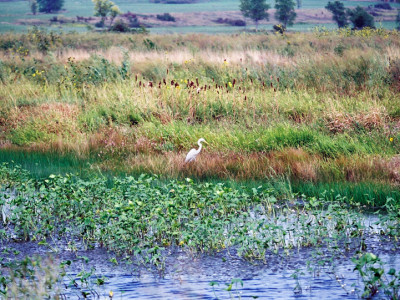The Long Life and Sudden Demise of Federal Wetlands Protection
Legal Planet: Environmental Law and Policy 2024-02-07

It’s no wonder that one EPA staffer’s reaction to the Supreme Court ruling was a single word: “Heartbroken.” In 2023, the Supreme Court ended fifty years of broad federal protection to wetlands in Sackett v. United States. It is only when you look back at the history of federal wetland regulation that you realize just how radical and destructive this decision was. For instance, under the Court’s reasoning, a Reagan Administration regulation as a blatantly illegal environmentalist overreach.
Here’s a timeline of the major events.
1972,
Congress passes the Clean Water Act, which requires a federal permit for filling or dredging in “navigable waters,” defined as the “waters of the United States.”
1977.
Army Corps defines navigable waters to include “isolated lakes and wetlands, intermittent streams, prairie potholes, and other waters … the destruction of which could affect interstate commerce.” A footnote explains that this category includes “”all other waters of the United States that could be regulated under the federal government’s Constitutional powers to regulate and protect interstate commerce.”
1985.
In US v. Riverside Bayview Homes, the Court upheld federal jurisdiction over wetlands that are adjacent to water bodies.
1986.
Reagan Administration codifies previous policies to cover all waters “such as intrastate lakes, rivers, streams (including intermittent streams), mudflats, sandflats, wetlands, sloughs, prairie potholes, wet meadows, playa lakes, or natural ponds, the use, degradation or destruction of which could affect interstate or foreign commerce,” plus adjacent wetlands.
1988.
President George H.W. Bush promises ‘no net loss of wetlands.”
2001.
In SWANCC v. U.S., Supreme Court strikes down a rule covers any wetland or pond used by migratory birds.
2006.
In Rapanos v. US, Justice Scalia writes for four Justices to advocate a very restrictive test of federal jurisdiction. Five Justices (four dissenters plus Justiice Kennedy) support the “significant nexus” test, which the lower courts generally view as binding law.
2015.
Obama Administration issues Waters of the United States (WOTUS rule), which ignites a major political dispute and becomes mired in litigation.
2020.
Trump Administration adopts a rule largely following Scalia’s view of the statute, but with some concessions to the Kennedy test.
2022.
Biden Administration adopts new version of WOTUS rule, which requires that a wetland be close enough to a water body that it can significantly influence water quantity or quality, generally meaning that they are within a few hundred feet.
2023.
In Sackett v. EPA, the Court adopts the restrictive Scalia test, which had been rejected by a majority of Justices in the 2006 Rapanos case. The ruling guts federal protection for wetlands and many small streams, especially in the West. It limits federal authority to a fraction of U.S. wetlands.